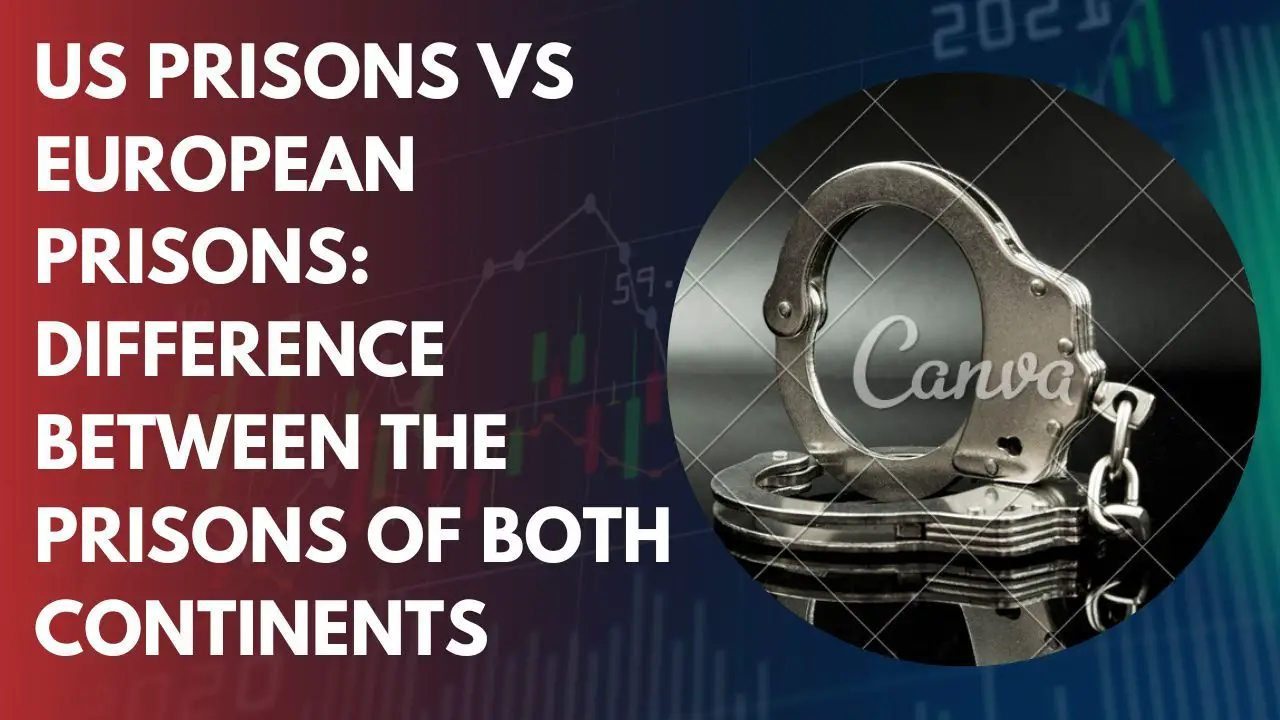US Prisons VS European Prisons: Difference between The Prisons of Both Continents
US Prisons VS European Prisons: Difference between The Prisons of Both Continents? In this article, we have discussed US Prisons VS European Prisons: The difference between The Prisons of Both Continents.

It has been an ongoing debate for a long time now and might continue to do so; US Prisons vs. European Prisons in terms of treating the offenders in a specific way. As New York Times reported, the European nations imprison people at a rate roughly one-tenth that of the United States, for much shorter periods, and under conditions intended more for social reintegration than punishment.
To "allow convicts to lead a life of social responsibility free of crime following release," as stated by German legislation, is the main objective of prison. While a state jail sentence in the United States typically lasts three years, more than 90% of punishments in the Netherlands and 75% of penalties in Germany are only one year or less.
The fundamental justification for incarceration is where the differences between the US Prison vs. European Prison system begin. For instance, in European prisons, some people prepare meals and wear clothes. They interact with staff who have received training in conflict resolution and educational philosophy in addition to jail security.
Usually, the system looks for alternatives to incarceration in countries like Germany and the Netherlands. Still, if there is none, they impose substantially shorter terms and rely on fines, probation, and other community service programs.
Now, of course, the safety and well-being of society are still important to the US Government, owing to which several European practices may not be adaptable. No leniency could be expected in cases of violent offenders with a history of capital crimes. However, many state prisons, such as Georgia, Colorado, Mississippi, etc., are working towards the reformation of outdated confinement practices.
US Prisons VS European Prisons: The Dark Side
We have all watched movies marked by dehumanization, physical violence, hunger, and continual agony and fear, such as Mad Max. It would make sense if such things came to our neighborhoods and traumatized people we used to know. It won't be a surprise if they end up feeling like a lost cause, unable to find a new direction for their lives, get a stable job, enjoy a respectful societal status, and so on.
Millions of people are imprisoned in the US Prisons, reminiscent of those scenes. At a rate of about 600,000 yearly, more than 95 percent of the more than 1.5 million inmates in American jails (as recorded in 2019) are eventually released back into society.
However, compared to European prisons, US prisons do a terrible job of training inmates for successful, law-abiding lives after release. It is easy to comprehend why US Prisons typically fail to adequately prepare inmates for effective reintegration into society. US prisons vs. European prisons are hazardous, overcrowded, and understaffed.
People in US prisons are subjected to shocking levels of violence, including sexual violence, due to insufficient monitoring. In 2019, the Department of Justice's Civil Rights Division concluded that Alabama's prison system had not adequately shielded inmates from the shockingly high rates of homicide and rape. Four stabbings (one of which resulted in a fatality), three sexual assaults, multiple beatings, and an inmate's bed set on fire while he slept.
Yet, a recent United States Sentencing Commission study observed that offenders confined for long periods of incarceration, mainly more than 60 months, had significantly lower odds of recidivism.
Reintegration into society: US Prisons VS European Prisons
We all agree that prisoners face difficulties restarting a new life once they are free, and the State must make this process easier for them. Let's look at the challenges faced by individuals coming out of US Prisons VS European Prisons. An ex-offender in the US is affected at micro, mezzo, and macro levels, and here's a deeper analysis of how their lives change after the "ex-offender" label.
Micro Level Challenges: (Personal Difficulties)
It is undeniable that ex-offenders have a far lower likelihood of finding a job than members of the general community, even though data on post-incarceration employment in connection to recidivism is scarce.
Only 12.5% of companies, according to the Bureau of Justice, claimed they would accept an application from a convicted felon. Ironically, returning to work reduces recidivism, but ex-offenders have trouble finding employment.
Because they have little formal education and work experience, many inmates find it challenging to find employment once they are released. According to a survey, almost 70% of criminals and ex-criminals are high school dropouts. Hence, for ex-convicts, getting an interview with a potential employer is exceedingly tough due to their small professional networks and obvious résumé gap.
Race is another consideration, especially when it's coupled with a criminal record. African-American ex-offenders thus confront two enormous challenges: Even if they hadn't done anything wrong, racism would have severely limited their employment options. Yet, now that they have done wrong, they must find a way to get through racism and persuade the company that they are not a bad choice because they are ex-cons.
Mezzo Challenges: (Family/Societal Difficulties)
According to studies, recidivism rates are lower for convicts who stay in touch and regularly connect with their families during their sentences. As parents of minor children, more than half of incarcerated people risk missing out on many of their offspring's formative years.
Unfortunately, there are challenges to keeping up regular contact with relatives, such as
- Inadequate knowledge of visiting protocols.
- Proximity; Men detained are often 100 miles away from prison facilities, while women are typically 160 miles away while incarcerated.
- Trouble organizing visits.
- Children/Families find visiting procedures degrading, awkward, or unwelcoming.
Ex-offenders, specifically those serving lengthy sentences, are more likely to encounter technological advancements crucial in emerging employment markets and to lack the training necessary to be competitive applicants.
Quickly learning about new technologies that have gradually taken the place of conventional systems can be overwhelming. For instance, individuals serving medium or lengthy imprisonment terms might never have used a smartphone or a metro card.
Macro Challenges: (Collateral Difficulties)
Legal restrictions that apply to former US inmates are known as collateral repercussions. This includes being unable to vote, get government assistance, or obtain food stamps. Other difficulties can include being turned down by a public housing manager because of your criminal history.
Theoretically, parole allows criminals to demonstrate that they can reintegrate into society before serving their full terms. Paradoxically, ex-offenders may experience additional, unforeseen readjustment difficulties due to parole requirements.
One frequent collateral effect, for instance, is difficulties renewing a driver's license. They are nevertheless required to pay supervision fees, keep a job, routinely drive to their parole officers, and perform all of these tasks while confined to a certain location.
Systematic Changes - US Prisons VS European Prisons:
In a European country, Estonia, a project named "support services for ex-convicts" was introduced in 2014, which helps ex-prisoners from European Prisons rejoin society and steer clear of offending again.
Following their release, they continue to support them for up to 18 months, assisting with daily problems while working with social services, housing facilities, and prison services. Together, they work toward structured objectives, such as filing for unemployment insurance to promote smooth reintegration.
In the US, however, many of the issues ex-offenders face are systemic, making policy changes necessary and a change in mindset from individuals who believe the punishment should continue even after sentences have been served. Still, NGOs and the Government are working towards ruling out such policies and ensuring that ex-inmates of US prisons enjoy their due rights after serving their sentence.
Read more related articles
- How Long Is A Life Sentence In The State Of California
- 5 Crimes That Classify for Life Sentence in Texas
- How Do I Write A Letter To Help Someone Get Out Of Prison?
- 9 famous prisons in the state of North Carolina
- 10 Famous Prisons in The State of Delaware
- 10 Famous Prisons in The State of Ohio
- 10 Best Prisons In The State of Ohio
- 10 Famous Prisons In The State of Texas
- Can You Visit Kerobokan Prison?
- How Does an Inmate File Taxes In The US?
